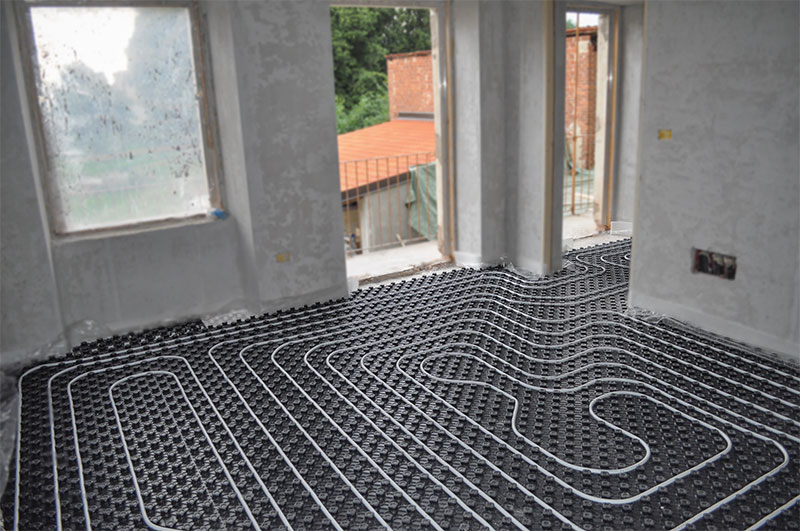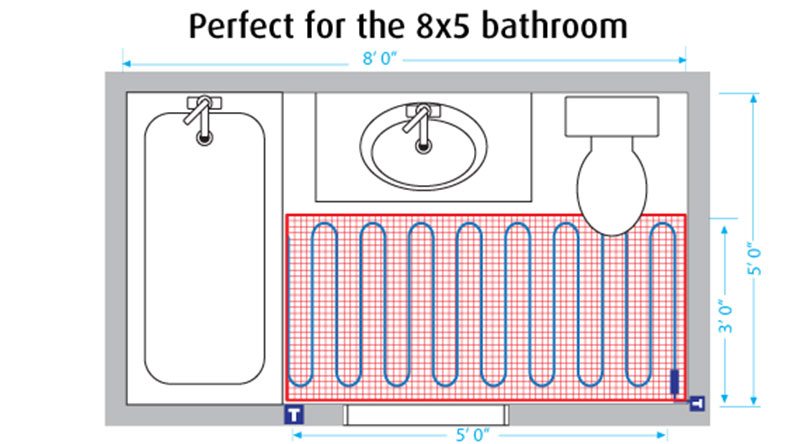Shielding your pipes, gutters, pavement, and roofing from excess snow and freezing temperatures is serious business. Heating cables are one way to do just that. However, there are self-regulating heating cables and constant wattage heating cables. So, which is best for you? Let’s take a look at everything you need to know about heating cables including uses, costs, and which type is better for you.
What is a Heating Cable?
A heating cable, otherwise known as a heat trace cable, is an electric wire cable that produces heat. There are two types of heating cables: self-regulating heating cables and constant wattage heating cables.
They can be used in a variety of ways, including:
- Roof Deicing
- Gutter Deicing
- Pipe Freeze Protection
- Snow Melting
- and more!
Of course, when you’re looking for heating cables, you’ll probably stumble on the term “heat tape,” as well. So, before diving deeper into the many applications of a heating cable, let’s clear up some minor discrepancies in the terminology.
Is There a Difference Between Heating Cable and Heating Tape?
Some may assume that heating tape and cables are different things, but that’s simply not true. Heating tape is just another word for heating cables. If you see that phrase thrown around during your research, rest assured that they mean the same thing.
Applications of Heating Cable
Let’s talk about the many ways you can use heating cables to protect your home:
Shield Against Ice and Snow in Gutters and Roofing
It’s vital to protect your gutters, roofing, and downspouts from ice and snow. Your downspouts and gutters may freeze if temperatures drop low enough, potentially creating ice dams and dangerous hanging icicles. If that happens, all the ice and snow runoff will have nowhere to go, and it will gather on your roof.
Unfortunately, heavy amounts of excess snow can cause severe damage to your roof and home, including leaks, sagging ceilings, cracks in walls, damaged tiles, roof collapses, and water damage. Fortunately, heating cables can be installed to melt and deice your roof and gutters, so you don’t have to worry about those potential hazards.
Pipe Protection
Unfortunately, leaving your faucets running during the winter doesn’t always do the trick. If your pipes freeze, when they thaw, they’re liable to burst, which can cause severe water damage and require super expensive repairs.
Heating cables are a worthy investment that protects your pipes and ultimately saves you the money and time it would take to repair them.
Constant Wattage Heating Cable
It’s pretty apparent that heating cables are a valuable investment, but what type of heating cables are best? To understand the differences between constant wattage and self-regulating heating cables, let’s talk about their benefits, uses, and costs.
Constant wattage cables are heating cables that produce the same amount of heat throughout the length of the cable. As a result, the power output remains consistent, creating evenly distributed heat throughout the entire length of the installation.
Benefits
This type of heating cable can be beneficial for homeowners who want to maintain consistent heat throughout their home. Since the temperature is usually set using a thermostat or control system, you get more hands-on control over your heating experience.
Uses
Constant wattage heating cables can provide supplemental or primary indoor heating, roof protection, and gutter protection. It’s a reliable and consistent heating source that will protect your home from ice and snow.
Costs
Constant wattage heating cables typically come in plug-in kits that are relatively inexpensive. Prices vary depending on the size of the equipment you purchase, but can cost on average anywhere between $113.00 and $452.50.
Self-Regulating Heating Cable
Self-regulating heating cables produce heat in segments based on the ambient temperature in each segment’s specific environment. For instance, if section 1 is colder than section 2, a self-regulating cable will not produce identical heat for both areas.
It will self-regulate and produce only the necessary amount of heat for each designated area. The heat produced in section 1 will be higher than the heat produced in section 2. This is beneficial for a few reasons.
Benefits
First, self-regulating heating cables are energy efficient. They only use electricity when the ambient temperature drops to freezing temperatures or when snow is detected. That means you don’t have to worry about constantly watching the weather, fearing a potential disaster.
Second, self-regulating heating cables are heavy-duty and durable enough to weather even the harshest weather conditions. Finally, since it self-regulates its output based on ambient temperature, it’s more cost-efficient in the long-term. It can also be cut to length to be easily customized to any application.
Uses
Self-regulating heating cables are ideal for roof deicing, gutter protection, indoor heating, snow melting, and more. They’re heavy-duty and provide variable heat, which makes them more suitable for pipe freeze protection.
They fit all roof types and come in easy-to-install kits, making them perfect for residential properties, no matter your roofing configuration. They’re also available commercial grade, making them an ideal option for large-scale, industrial projects as well.
Costs
Self-regulating heating cables come in many forms, including plug-in kits and large spools, fit for sizable projects, commercial buildings, and engineered systems. The costs of the kits range from $79.00 to $444.00. The costs of the spools range from $1,767.50 to $7,276.00.
Which is Better?
Choosing between constant wattage heating cables and self-regulating heating cables can be tricky, sometimes it just comes down to your needs and personal preferences.
Constant wattage cables are great for inexpensive, quick, DIY projects. They’re also ideal for someone who wants hands-on control over their heating cable system.
Of course, constant wattage heating cables aren’t without their disadvantages. Unlike self-regulating systems, they aren’t suited to heavy-duty or commercial applications. You have to turn them on manually, so you must constantly watch the weather to ensure they work as intended.
Self-regulating heating cables, on the other hand, are much more hands-off. They’re more energy-efficient, cost-efficient, and infinitely more suitable for pipe freeze protection. Plus, they’re the ideal solution for harsh winters, providing optimal deicing, snow melting, and freeze protection, no matter the environment.
In direct comparison, self-regulating kits are equally suited to inexpensive, quick, DIY projects. So, no matter your needs or climate, self-regulating heating cables might be the best option for you.
Protect Your Home with Self-Regulating Heating Cable from Warmup
If you’re looking for the most comprehensive solutions to protecting your home this winter, you’ve come to the right place. Warmup has decades of experience and is the leading provider of heating cable systems worldwide. Get a free quote today!


![Which Underfloor Heating Is Best for Me? [Flowchart]](https://www.warmup.ca/wp-content/uploads/underfloor-heating-flow-chart-thumb-300x199-1.jpg)


